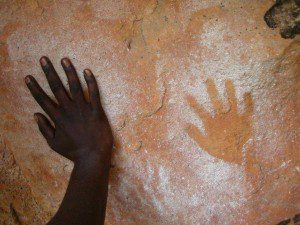29th October 2013
Guest Writer for Wake Up World
Australia’s First Peoples are suiciding at the world’s highest rates. Gerry Georgatos explains why poor policy, a sense of hopelessness and a loss of identity are some of the reasons why.
STANDALONE, racially Aboriginal peoples endure horrific statistics unparalleled by the rest of Australia – horrific high incarceration rates impute racialized imprisonment, horrific high homelessness rates impute racialized neglect, and the horrific high suicide rates impute not only racialized neglect but criminal neglect.
According to the Australian Bureau of Statistics, there were 996 suicide deaths reported across Australia between 2001 to 2010 of Aboriginal and Torres Strait Islanders peoples. It is a horrific statistic — translating into one in every 24 Aboriginal or Torres Strait Islanders peoples dying by suicide.
By comparison, 99 Aboriginal deaths in custody over a nine year period launched the Royal Commission into Aboriginal Deaths in Custody.
The Aboriginal and Torres Strait Islander population has a median age of 21 years, compared with 37 years for the rest of Australia.
1.6 per cent of all Australians die by suicide, but for Aboriginal peoples this rises to more than 4.2 per cent of all deaths. This means most Aboriginal families are affected by suicide, as are also most Aboriginal families affected by the high incarceration rates.
Aboriginal peoples around the world endure disproportionate high rates of suicide, but Australia’s divide between its national average and its Aboriginal peoples is one of the world’s worst, with Australia’s Aboriginal youth suicide rate the worst. In total, Australia’s Aboriginal suicide rates are higher than those of every African country, third-world countries included, and higher than every country on the planet, with the exception of Greenland.
With adult males, the suicide rate of Aboriginal peoples is highest within the 25 to 29 years age group, with 91 deaths per 100,000, as compared 22 deaths per 100,000 for their non-Aboriginal counterparts. With adult females, the suicide rate of Aboriginal peoples is highest within the 20 to 24 years age group with 22 deaths per 100,000, more than five times higher than their non-Aboriginal counterparts, 4 deaths per 100,000.
For Aboriginal peoples the ABS standardised rate of suicide is at two and half times higher for males than the rest of the population, and three and half times higher for females than the rest of the population. In some jurisdictions, it has reached as high as five and seven times and, with children, five to eight times. In some remote communities, spates of suicide have reached 100 times the national suicide average.
For every suicide, there are hundreds of attempted suicides – with the ABS reporting collated hospital data that validate the extent of suicidal thought moving beyond ideation. In the 2008-2009 financial year, thousands of Indigenous people were hospitalised due to self-harm.
Young Aboriginal and Torres Strait Islander males, 15 years to 19 years, are four-and-a-half times more likely to die by suicide than their non-Aboriginal counterparts. Young Aboriginal and Torres Strait females, 15 years to 19 years, are six times more likely to die by suicide than other young females.
In the Kimberley region – Western Australia’s tourist mecca, the Aboriginal homelessness rate is astronomical, with some of its towns’ suicide rates reaching up to 100 times the national average.
The tragedy is endemic throughout Australia; last year, a Northern Territory Select Committee on Youth Suicides tabled its report into youth suicide and found the obvious — that there are significantly higher rates of Aboriginal suicides when compared to the national average.
Between 2001 and 2006, the Northern Territory suicide rate for Aboriginal youth aged between 15 years to 24 was 3.5 times that of the rest of the nation. The report highlighted the young ages at which Aboriginal youth were committing suicide and the rise of young Aboriginal women suiciding.
The report concluded that Indigenous Territorians were losing falling into despair:
The suicide rate for Indigenous Territorians is particularly disturbing, with 75 per cent of suicides of children from 2007 to 2011 in the Territory being Aboriginal. For too many of our youth there is not enough hope to protect them from the impulse to end their lives.
The suicide rate increased for youth between ages 10 and 17 – up from 18.8 per cent to 30.1 per cent per 100,000 – in contrast to non-Aboriginal youth suicides, which dropped from 4.1 per cent to 2.6 per cent.
The report found the rate of suicide among Aboriginal girls had increased, with girls now up to 40 per cent of suicides of children aged less than 17 years.
Click to openThe report highlighted the underlying causes to Aboriginal youth suicide as mental illness (somthing I dispute), substance abuses and sexual abuse trauma, but failed to highlight acute poverty and a suite of rights denied to this day to Aboriginal peoples in many of these troubled communities.
What is missing in many of these communities are the pathways and access to opportunities and to the benefits of education and hard work that the rest of Australia to which the rest of Australia has access.
These communities continue to be neglected by State and Federal government jurisdictions and their agencies. Services and layers of community infrastructure have not been grafted into these communities and, instead, they are dilapidated third-world environments.
As a result of my own research into Aboriginal youth suicides, and suiciding in general, alongside others I have decided to sustain the highlighting of the horrific rates of Aboriginal youth suicide, and the high rates of premature deaths. It was my comparative global data research only a few years ago that confirmed that the prevalence of spates of suicides among Australian Aboriginal youth are the world’s worse statistics, and that these spates are becoming more prevalent and tragically settling in higher medians year in year out. I have found that despite the spikes in Aboriginal youth suicide, and the rise to the medians, there has been no spike or median increases in government funding to help reduce Aboriginal youth suicides.
I am assisting in the formation of a truly national council that will highlight and seek to address the horror of these spates of suicide in the world’s 12th largest economy and second wealthiest nation per capita. The council will first convene in Adelaide near the year’s end.
Well known education and researcher Kabi Kabi Elder and Central Queensland University Bundaberg campus coordinator Cheri Yavu-Kama-Harathunian said she is devastated by the rising disenfranchisement of Aboriginal youth and the world’s highest rate of suicide by Australia’s Aboriginal children.
Eighteen months ago, Mrs Yavu-Kamu-Harathunian said:
Across my desk came a study that reported the number of completed Indigenous suicides (in the Kimberley) last year exceeded the Australian Defence Force fatalities in Afghanistan. I cannot comprehend this statement. It is too much.
She asks what motivates our young people to disconnect from themselves and what motivates
…our brothers and sisters to disconnect from themselves and then move into that helpless hope of perhaps finding themselves in their sleep of death.
Mrs Yavu-Kamu-Harathunian said:
All around this community (Mowanjum) there is so much progress, production, this affluence. What is progress, this production, this affluence stealing from our people?
To read about this painful crisis, to recognise the layers of disconnection, the internal anguish, community sorrow, pain, trauma, suffering is like a microcosm of the inherent legacy of pain, torment, and suffering that our people are immersed in.
This is a culturally collective crisis, and it impacts upon all of us who say we are First Nations peoples. To think that this tiny little community possibly has the highest rates of suicide not just in Australia but in the world is insanity.
I remember a beautiful strong Aboriginal woman from Bardi Country way – Wendy. I respectfully do not use her surname here, mid 1990s, who developed for the first time in my lifetime, a great understanding of alcohol and its use and abuse amongst our people.
I remember her words of warning then, that because of the use of alcohol amongst our people, alcohol users would begin using at a younger and younger age. Her gravest concern way back then was about the rise I suicide.
We are now picking up the pieces of our loved ones.
“How many suicides, how many more deaths will it take to open our eyes, and open our ears to the silent screaming that is coming from the hearts, and souls of those who are gone, and of those who grieve and keep screaming ‘Help…’”
In NSW, with Australia’s largest Aboriginal population, the youth suicide rate is one in 100,000; in the Northern Territory, the rate is 30 deaths in 100,000. In the Kimberley, with an Aboriginal population of 14,000, the rate of youth suicide is one death in 1,200 — over 80 per 100,000.
Despite the deaths, there is no effective suicide prevention strategy being funded and administered in the Kimberley. Last year, the West Australian government spent $150 million on the Derby prison – an ‘Aboriginal prison’ – while hundreds of applications by Aboriginal run organisations for government funding are knocked back.
Thirty years ago, Aboriginal youth was not killing themselves at the rates we have today, nor were they twenty years ago and even ten years ago the suicide rates were much lower than today. The suicide rates are on the rise and the median ages of suicides are getting younger — this evidences the sense of hopelessness felt by many.
Much of the hope of previous generations invested in the Black Power movements, in the Land Rights movements, in the striving for Treaty and equality has dissipated for many Aboriginal peoples who have waited and nothing positive has eventuated for them, and for many the belief is that they have less now than they did two decades ago.
I have interviewed more than 100 Territorian Aboriginal Elders, and similarly more than 100 Aboriginal Western Australian Elders for research titled “Climate of Death” and “People are not the Property of People; the Northern Territory is Prison built brick by brick by the Commonwealth” and the overwhelming majority described beliefs that all they or their parents struggled for two and three decades ago has now vanished. They despair at being effectively forced into surrendering culture, their homelands and their right to their historical identity.
They have no trust in ministries of Aboriginal Affairs or in a Prime Minister for Indigenous Affairs; they do not believe any longer in the presumption these arguable affirmative actions will deliver what is now long overdue.
The majority of those I have spoken with – numbering in the hundreds – inherently fear these ministries, that they believe are responsible for corralling them and extinguishing many of their rights and freedoms. They see these ministries, as I do, as covert – whether inadvertent or not – social engineering attempts by Governments and their bureaucracies. They see colonialist attitudes continuing.
Employment, education, health, community and infrastructure are invaluable to reducing both imprisonment and suicide rates, but with suicides it is not just underlying issues related to impoverishment — my research and investigations have found that disempowerment is a major contributor.
Despite the majority of the Aboriginal youth who are suiciding or attempting suicide being unemployed and dejected by a sense of hopelessness, far too many – though not the majority –were indeed employed, but they too reported a sense of hopelessness or crippling dejection — the situational trauma of one’s cultural identity rubbished by the majority of Australia, misguided do-gooder bureaucratic programs and by the forces of assimilation. Cognitively, all this generates situational trauma, and degenerates into continuing traumas and stress disorders, disempowering far too many into a sense that their historical and contemporary identities are a liability.
Minimalist suicide prevention strategies have failed.
Alcohol and drug abuse are factors, but they are not drivers; other factors underlie the use of alcohol and drugs, and so for a radical reduction to drug and alcohol use and in reducing suicides, we have to address the factors that lead to the use of alcohol and drugs and other aimlessness and self-destruction.
As long as we continue to deny that ethnicity and connectedness with historical and cultural identity do not matter then we will continue with suicide rates that are the world’s worst, and indeed continue with the veils and layers of racism.
Whose child will be the next to die?
About the Author
Gerry Georgatos is a print and online journalist, most recently with the National Indigenous Times and the National Indigenous Radio Service. He is a PhD researcher in Australian custodial systems and deaths in custody, as well as a prolific writer on human rights issues and social justice. He has two masters degrees, one in human rights education and the other in social justice advocacy. Gerry was also the WikiLeaks Party Senate candidate for Western Australia.

If you've found value in our articles, we invite you to support the release of our brand-new book, "Gratitude Practices for Kids: A Practical Guide for Adults to Instill a Spirit of Appreciation and Positivity in the Next Generation."
"Gratitude Practices for Kids" brings together over 25 innovative and accessible practices designed to enhance gratitude in everyday life. This comprehensive guide is backed by 17 scientific studies, ensuring each concept is grounded in research, underscoring our commitment to nurturing growth, emotional intelligence, and positive interactions between adults and children.
We encourage you to opt for the paperback version to celebrate this new release. Dive into its fresh pages away from digital distractions, allowing you to immerse yourself in the transformative practices it offers.
Over recent years, Wake Up World has faced significant online censorship, which has impacted our financial ability to operate. Moving into book publishing represents a strategic step to secure the ongoing funds needed to continue our mission. By purchasing Gratitude for Kids, you help us keep our content free and accessible to everyone, avoiding needing a paywall. With over 8,500 articles published in the last 13 years, we remain dedicated to keeping our valuable content open to all.








